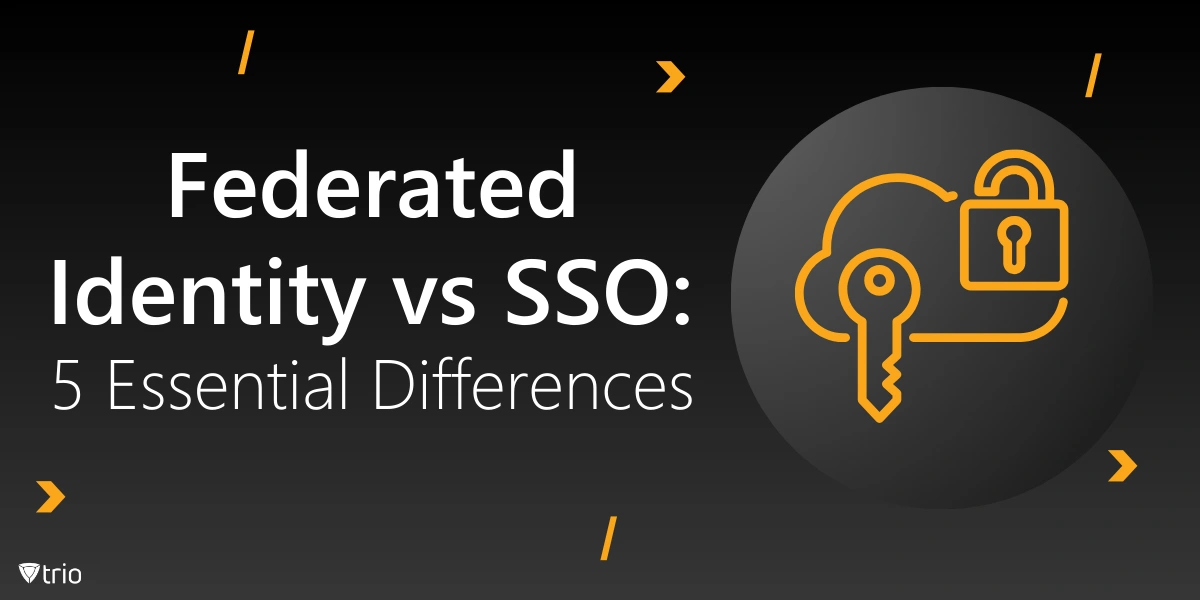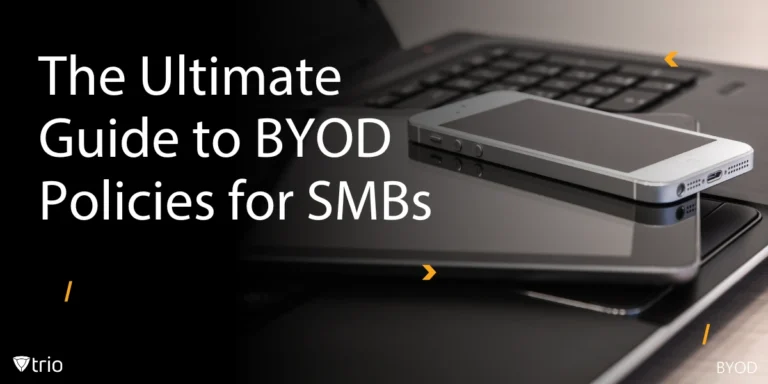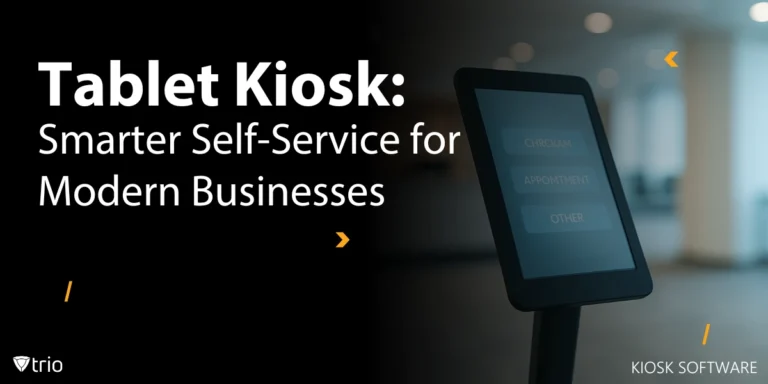In today's fast-paced digital world, managing user identities securely and efficiently is more critical than ever. Companies juggle numerous applications, devices, and users, making identity management a cornerstone of modern IT environments. Without proper oversight, security risks multiply, and productivity takes a hit.
Yet, when choosing the right identity solutions, the debate of federated identity vs SSO often surfaces. Many professionals scratch their heads over federated identity vs SSO vs single sign, wondering which path leads to seamless access and robust security. The confusion is understandable given the overlapping features and technical jargon.
This blog post aims to clear the fog surrounding these concepts. We'll dive into the five essential differences between federated identity and Single Sign-On (SSO), helping you make informed decisions to enhance your organization's security strategy. Along the way, we'll explore how MDM integration plays a pivotal role in streamlining identity management.
What Is Single Sign-On (SSO)?
Single Sign-On (SSO) is a user authentication process that permits a user to access multiple applications with one set of login credentials. Think of it as a master key that unlocks various doors within a single building. SSO streamlines the login experience, making it more convenient for users and easier for administrators to manage.
By simplifying user authentication within a single domain, SSO reduces the need for multiple passwords and usernames. Users no longer have to remember a dozen different logins for different applications; one credential does it all. This enhances productivity and minimizes the risk of forgotten passwords and account lockouts.
So, how does SSO work under the hood? A centralized authentication server verifies the user's credentials when they log in. Once authenticated, the user is granted access to all connected applications without the need to log in again. This seamless experience is a hallmark of effective Single Sign-On solutions.
While SSO enhances user experience by reducing password fatigue, it's not without limitations. The primary drawback is that it's typically confined to applications within one organization. If your business relies on external services or collaborates with other companies, SSO alone might not suffice.
Moreover, centralizing authentication can be a double-edged sword. If the SSO system is compromised, multiple applications could be at risk. Therefore, implementing robust security measures is crucial when deploying SSO. Despite these challenges, the benefits often outweigh the drawbacks for many organizations.
What Is Federated Identity Management?
Federated Identity Management is like having a passport that grants you access across different countries—in this case, multiple domains and organizations. It enables authentication across various systems without the need for multiple logins. This approach is essential for businesses that collaborate with external partners, facilitating a seamless user experience through federated authentication.
So, how does federated identity work its magic? It relies on trust relationships established between identity providers and service providers. Essentially, one organization trusts another to authenticate users on its behalf. Federated identity providers play a crucial role here, acting as gatekeepers that verify user identities and share that information securely with other parties.
To ensure everything runs smoothly, federated identity utilizes standardized protocols like SAML and OAuth. SAML authentication, in particular, allows secure sharing of identity information between domains. These protocols act as universal translators, enabling different systems to understand and trust each other.
The benefits are substantial. Federated identity facilitates seamless inter-organizational collaboration, making it easier for users to access resources across different platforms without jumping through hoops. However, this convenience comes with its own set of challenges. Managing trust relationships can be complex, requiring careful planning and robust security measures.
Additionally, the complexity of implementing federated identity shouldn't be underestimated. Organizations must invest time and resources to establish and maintain these trust relationships. Despite the hurdles, the ability to collaborate effortlessly with external entities makes federated identity an attractive option for many businesses.

The 5 Essential Differences Between Federated Identity and SSO
Now that we've unpacked what SSO and federated identity entail, let's delve into the five essential differences that set them apart. By examining the federated identity vs SSO pros and cons, you'll be better equipped to decide which solution aligns with your organizational needs. Think of it as choosing the right tool for the job.
1. Scope of Access
SSO operates within the confines of a single organization's domain. It's like having an all-access pass to everything inside your own house. Federated Identity, on the other hand, extends access across multiple organizations, akin to a VIP pass that gets you into various venues.
If your operations are mostly internal, SSO suffices. But if you collaborate externally, federated identity becomes indispensable. It's a classic case of federated vs non-federated approaches, and your choice hinges on the breadth of access your users need.
2. Authentication vs. Trust Relationships
SSO focuses primarily on streamlining authentication internally. It centralizes user credentials, making it easier for users to log in once and access multiple applications. Federated Identity manages trust between external identity providers, not just authentication.
This difference affects implementation complexity and security considerations. While SSO is straightforward, federated identity requires meticulous planning to ensure that trust is both genuine and secure.
3. Technical Architecture and Protocols
SSO often uses centralized servers and proprietary protocols. It's like building a custom car—you have full control but limited compatibility. Federated Identity relies on standardized protocols like SAML and OAuth.
This reliance on standards affects compatibility and interoperability with external systems. Implementing federated identity means you're more likely to play nicely with others, thanks to protocols like SAML configuration that ensure everyone speaks the same language.
4. Security Considerations
Security is a double-edged sword in both systems. SSO centralizes risk; a data breach can affect multiple applications within your organization. Federated Identity introduces cross-domain security risks, as you're now trusting external parties.
Both require robust security policies and risk mitigation strategies. With SSO, you need to fortify your central authentication server. With federated identity, you must ensure that trust relationships are secure and that external parties uphold their end of the security bargain.
5. User Experience
SSO offers a smooth user experience within one organization. Users log in once and have access to everything they need internally. Federated Identity provides seamless access across different organizations.
The impact on productivity and user satisfaction is broader with federated identity, especially for users who need to collaborate externally. It's the difference between being efficient in your own workspace and navigating multiple workspaces with equal ease.
Practical Applications and Use Cases
So, when should you roll out SSO? It's ideal for organizations aiming to streamline internal access. If your employees juggle multiple applications within your company's ecosystem, Single Sign-On simplifies their lives. It reduces password fatigue and boosts productivity.
On the flip side, federated identity shines when collaborating with external partners. If your company frequently interacts with vendors, clients, or other organizations, federated identity is the way to go. It enables secure, seamless access across different domains.
Let's look at a federated identity management example. In healthcare, federated identity allows for secure data sharing between hospitals and clinics. University consortiums use it to grant students access to resources across different campuses. Enterprise partnerships benefit by facilitating collaboration without compromising security.

Bridging Identity Management with Trio's MDM Solution
Mobile Device Management (MDM) is the missing puzzle piece in the identity management landscape. By integrating MDM with SSO and federated identity solutions, you create a cohesive security environment that covers both user identities and their devices. Trio steps into this space, offering an MDM integration that complements your identity management strategy.
With Trio, you can streamline device and identity management under one roof. Our solution enhances security while simplifying administration, making it easier to implement federated authentication or Single Sign-On solutions. Don't take our word for it—experience the benefits firsthand by trying our free demo. Elevate your security posture with Trio today.
Conclusion
Navigating the maze of identity management options can be daunting, but understanding the key differences between federated identity and SSO is a significant first step. We've explored how they differ in scope, architecture, security, and user experience. Each has its pros and cons, and the right choice depends on your organization's unique needs.
Ultimately, aligning your identity management strategy with your organizational goals is crucial for optimal security and efficiency. Whether you opt for SSO to streamline internal access or federated identity to facilitate external collaboration, the decision should enhance your overall security posture. Choose wisely, and your users—and your bottom line—will thank you.
Get Ahead of the Curve
Every organization today needs a solution to automate time-consuming tasks and strengthen security.
Without the right tools, manual processes drain resources and leave gaps in protection. Trio MDM is designed to solve this problem, automating key tasks, boosting security, and ensuring compliance with ease.
Don't let inefficiencies hold you back. Learn how Trio MDM can revolutionize your IT operations or request a free trial today!





